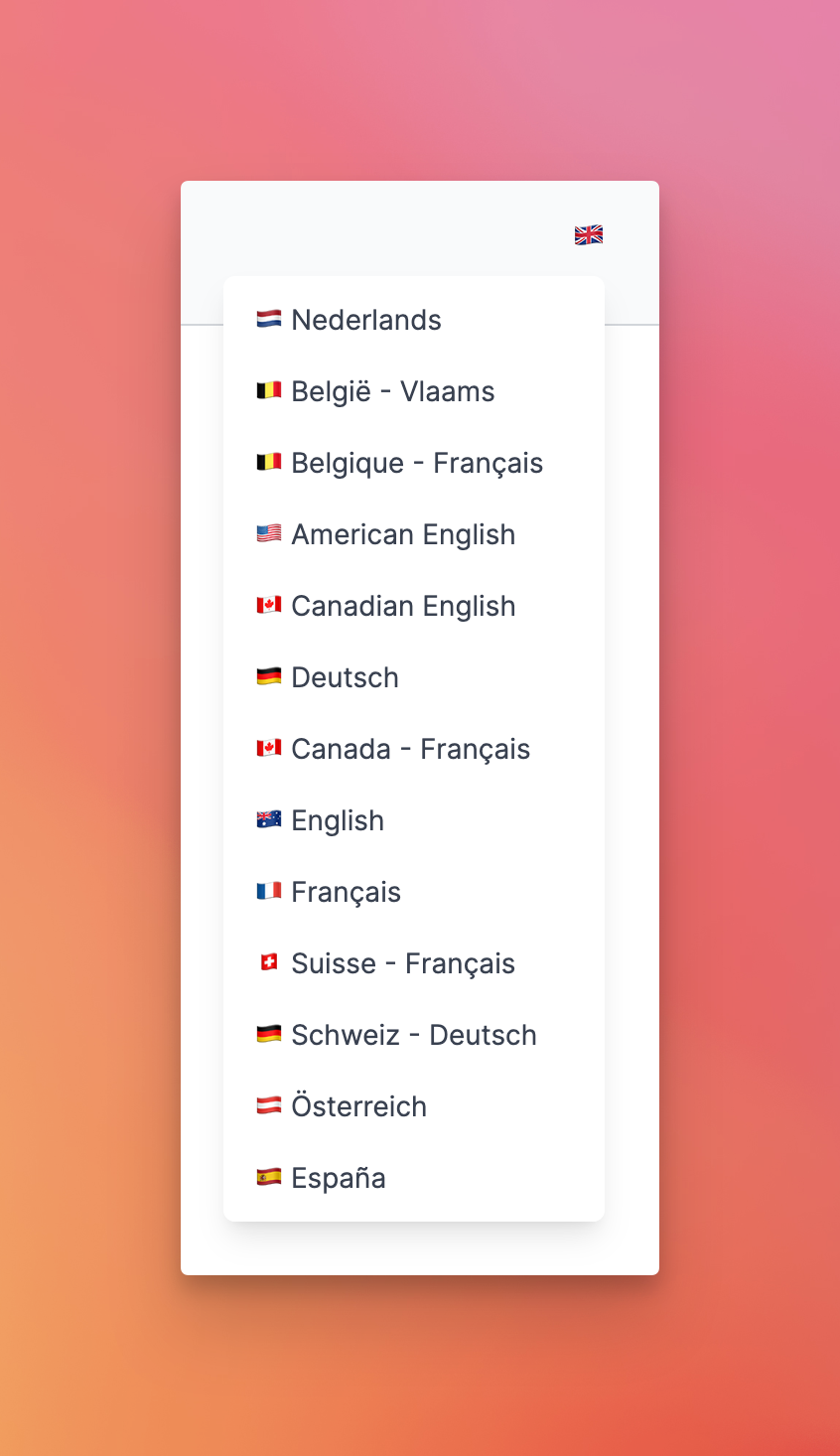Language Switcher
How to switch lang_country
There is a named route lang_country.switch you can use that will take the new lang_country as a parameter. In the example below we're switching to nl-BE:
route('lang_country.switch', ['lang_country' => 'nl-BE'])It will first check if the requested lang_country is in your allowed list of your config file. When so, it will change all the sessions accordingly. If it detects there is a logged in User, it will also change the lang_country preference of this user to the database.
Create a language selector
It's really easy to create a language selector! You can use LangCountry::langSelectorHelper(). The output will be based on the allowed list of your config file. It will return an array with the following example:
Array
(
[available] => Array
(
[0] => Array
(
[country] => NL
[country_name] => The Netherlands
[country_name_local] => Nederlands
[lang] => nl
[name] => Nederlands
[lang_country] => nl-NL
[emoji_flag] => 🇳🇱
[currency_code] => EUR
[currency_symbol] => €
[currency_symbol_local] => €
[currency_name] => Euro
[currency_name_local] => Euro
)
[1] => Array
(
[country] => BE
[country_name] => The Netherlands
[country_name_local] => Nederlands
[lang] => nl
[name] => België - Vlaams
[lang_country] => nl-BE
[emoji_flag] => 🇧🇪
[currency_code] => EUR
[currency_symbol] => €
[currency_symbol_local] => €
[currency_name] => Euro
[currency_name_local] => Euro
)
[2] => Array
(
[country] => GB
[country_name] => United Kingdom
[country_name_local] => United Kingdom
[lang] => en
[name] => English
[lang_country] => en-GB
[emoji_flag] => 🇬🇧
[currency_code] => GBP
[currency_symbol] => £
[currency_symbol_local] => £
[currency_name] => Pound Stirling
[currency_name_local] => Pound
)
[3] => Array
(
[country] => CA
[country_name] => Canada
[country_name_local] => Canada
[lang] => en
[name] => Canadian English
[lang_country] => en-CA
[emoji_flag] => 🇨🇦
[currency_code] => CAD
[currency_symbol] => $
[currency_symbol_local] => CA$
[currency_name] => Dollar
[currency_name_local] => Canadian Dollar
)
)
[current] => Array
(
[country] => US
[country_name] => United States of America
[country_name_local] => America
[lang] => en
[name] => American English
[lang_country] => en-US
[emoji_flag] => 🇺🇸
[currency_code] => USD
[currency_symbol] => $
[currency_symbol_local] => US$
[currency_name] => Dollar
[currency_name_local] => US Dollar
)
)With this array, you're able to create a dynamic language/country switcher like this in your own frontend framework of choice.
